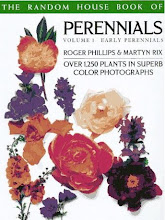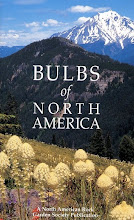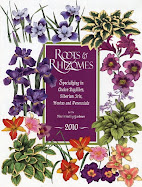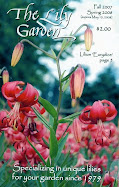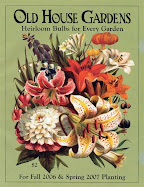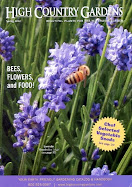Rosa rugosa 'Hansa'
Kniphofia 'Percy's Pride' (Torch Lily)
Hypericum 'Hidcote' (St John's Wort)
Shrubs
Arctostaphylos columbiana (Hairy Manzanita) Arctostaphylos densiflora (Vine Hill Manzanita) Arctostaphylos ‘Sunset’ & others
Berberis thunbergii 'Crimson Pygmy', Berberis thunbergii 'Helmond Pillar', Berberis thunbergii 'Rose Glow', Berberis thunbergii 'Royal Cloak' (Japanese Barberry) & others
Calluna vulgaris (Heather)
Caryopteris x clandonensis (Bluebeard)
Daboecia cantabrica (Irish Heath)
Erica arborea 'Estrella Gold', Erica australis, Erica carnea, Erica x darleyensis (Heath) & others
Hebe buxifolia, Hebe ochracea, Hebe 'Red Edge', Hebe topiaria, Hebe ‘Western Hills’ & others
Arctostaphylos columbiana (Hairy Manzanita) Arctostaphylos densiflora (Vine Hill Manzanita) Arctostaphylos ‘Sunset’ & others
Berberis thunbergii 'Crimson Pygmy', Berberis thunbergii 'Helmond Pillar', Berberis thunbergii 'Rose Glow', Berberis thunbergii 'Royal Cloak' (Japanese Barberry) & others
Calluna vulgaris (Heather)
Caryopteris x clandonensis (Bluebeard)
Daboecia cantabrica (Irish Heath)
Erica arborea 'Estrella Gold', Erica australis, Erica carnea, Erica x darleyensis (Heath) & others
Hebe buxifolia, Hebe ochracea, Hebe 'Red Edge', Hebe topiaria, Hebe ‘Western Hills’ & others
Helichrysum angustifolium (Curry Plant) Helichrysum italicum
Hypericum androsaemum 'Albury Purple', Hypericum 'Hidcote' (St John's Wort) & others
Hypericum androsaemum 'Albury Purple', Hypericum 'Hidcote' (St John's Wort) & others
Lavandula angustifolia (English Lavender) Lavandula dentata (French Lavender) Lavandula stoechas (Spanish Lavender)
Lithocarpus densiflorus var. echinoides (Dwarf Tanoak)
Myrtus communis (Common Myrtle)
Olearia x haastii, Olearia x mollis
Phlomis fruticosa (Jerusalem Sage) & other species
Potentilla fruticosa (Cinquefoil)
Rosa rugosa (Sea Tomato)
Lithocarpus densiflorus var. echinoides (Dwarf Tanoak)
Myrtus communis (Common Myrtle)
Olearia x haastii, Olearia x mollis
Phlomis fruticosa (Jerusalem Sage) & other species
Potentilla fruticosa (Cinquefoil)
Rosa rugosa (Sea Tomato)
Rosmarinus officinalis (Rosemary)
Santolina chamaecyparissus (Lavender Cotton)
Senecio monroi (name changed to Brachyglottis)
Yucca filamentosa ‘Color Guard’, Yucca filamentosa ‘Bright Edge’ (Yucca)
Perennials
Achillea millefolium (Yarrow)
Allium (Ornamental Onion) many species
Armeria maritima (Thrift)
Senecio monroi (name changed to Brachyglottis)
Yucca filamentosa ‘Color Guard’, Yucca filamentosa ‘Bright Edge’ (Yucca)
Perennials
Achillea millefolium (Yarrow)
Allium (Ornamental Onion) many species
Armeria maritima (Thrift)
Asclepias tuberosa (Orange Milkweed) Asclepias speciosa (Showy Milkweed)
Aster (Michaelmas Daisy)
Baptisia australis (False Indigo)
Camassia leichtlinii, Camassia quamash (Camas)
Crocus many species
Echinops ritro (Globe Thistle)
Echinacea purpurea (Purple Coneflower)
Erigeron glaucus (Beach Aster) Erigeron karvinskianus (Santa Barbara Daisy) Erigeron speciosus (Showy Fleabane) & others
Eryngium amethystinum, Eryngium bourgatii, Eryngium variifolium (Sea Holly) & others
Euphorbia characias, Euphorbia x martinii, Euphorbia rigida (Spurge): & others
Geranium cantabrigiense, Geranium sanguineum (Cranesbill) & others
Helianthemum nummularium (Sunrose)
Helenium autumnale (Sneezeweed)
Hemerocallis (Daylily)
Hyacinthus orientalis (Hyacinth)
Iris douglasiana (Douglas Iris)
Kniphofia (Torch Lily)
Lobelia tupa (Tupa)
Ornithogalum umbellatum (Star of Bethlehem)
Paeonia (Peony)
Panicum virgatum (Switchgrass)
Romneya coulteri (Matilija Poppy)
Salvia (Sage)
Scilla peruviana (Giant Squill)
Tulipa batalinii, Tulipa turkestanica (Tulip) & other species
Scrophularia macrantha
Sedum 'Autumn Joy', Sedum 'Matrona', Sedum 'Vera Jameson' (Stonecrop) & others
Groundcovers
Arctostaphylos x media (A columbiana x A uva-ursi) Arctostaphylos nevadensis (Pinemat Manzanita) Arctostaphylos uva-ursi(Kinnikinnick) & other species
Aubrieta deltoidea (Rock Cress)
Aurinia saxatilis (Basket of Gold)
Campanula carpatica (Carpathian Harebell)
Ceanothus gloriosus (Point Reyes Ceanothus) Ceanothus griseus var. horizontalis (Carmel Creeper)
Hebe glaucophylla, Hebe x pimeleoides, Hebe pinguifolia 'Pagei' (Hebe)
Hypericum cerastioides (St John’s Wort)
Juniperus conferta (Shore Juniper) Juniperus procumbens (Japanese Garden Juniper) Juniperus squamata 'Blue Carpet'
Lithodora diffusa (Lithodora)
Penstemon pinifolius (Pineleaf Beardtongue)
Rosmarinus officinalis ‘Prostratus’ (Trailing Rosemary)
Sedum oreganum, Sedum reflexum 'Angelina', Sedum spathulifolium 'Cape Blanco', Sedum spurium (Stonecrop) & others
Veronica pectinata (Woolly Speedwell) Veronica prostrata (Harebell Speedwell)
Aster (Michaelmas Daisy)
Baptisia australis (False Indigo)
Camassia leichtlinii, Camassia quamash (Camas)
Crocus many species
Echinops ritro (Globe Thistle)
Echinacea purpurea (Purple Coneflower)
Erigeron glaucus (Beach Aster) Erigeron karvinskianus (Santa Barbara Daisy) Erigeron speciosus (Showy Fleabane) & others
Eryngium amethystinum, Eryngium bourgatii, Eryngium variifolium (Sea Holly) & others
Euphorbia characias, Euphorbia x martinii, Euphorbia rigida (Spurge): & others
Geranium cantabrigiense, Geranium sanguineum (Cranesbill) & others
Helianthemum nummularium (Sunrose)
Helenium autumnale (Sneezeweed)
Hemerocallis (Daylily)
Hyacinthus orientalis (Hyacinth)
Iris douglasiana (Douglas Iris)
Kniphofia (Torch Lily)
Lobelia tupa (Tupa)
Ornithogalum umbellatum (Star of Bethlehem)
Paeonia (Peony)
Panicum virgatum (Switchgrass)
Romneya coulteri (Matilija Poppy)
Salvia (Sage)
Scilla peruviana (Giant Squill)
Tulipa batalinii, Tulipa turkestanica (Tulip) & other species
Scrophularia macrantha
Sedum 'Autumn Joy', Sedum 'Matrona', Sedum 'Vera Jameson' (Stonecrop) & others
Groundcovers
Arctostaphylos x media (A columbiana x A uva-ursi) Arctostaphylos nevadensis (Pinemat Manzanita) Arctostaphylos uva-ursi(Kinnikinnick) & other species
Aubrieta deltoidea (Rock Cress)
Aurinia saxatilis (Basket of Gold)
Campanula carpatica (Carpathian Harebell)
Ceanothus gloriosus (Point Reyes Ceanothus) Ceanothus griseus var. horizontalis (Carmel Creeper)
Hebe glaucophylla, Hebe x pimeleoides, Hebe pinguifolia 'Pagei' (Hebe)
Hypericum cerastioides (St John’s Wort)
Juniperus conferta (Shore Juniper) Juniperus procumbens (Japanese Garden Juniper) Juniperus squamata 'Blue Carpet'
Lithodora diffusa (Lithodora)
Penstemon pinifolius (Pineleaf Beardtongue)
Rosmarinus officinalis ‘Prostratus’ (Trailing Rosemary)
Sedum oreganum, Sedum reflexum 'Angelina', Sedum spathulifolium 'Cape Blanco', Sedum spurium (Stonecrop) & others
Veronica pectinata (Woolly Speedwell) Veronica prostrata (Harebell Speedwell)























































